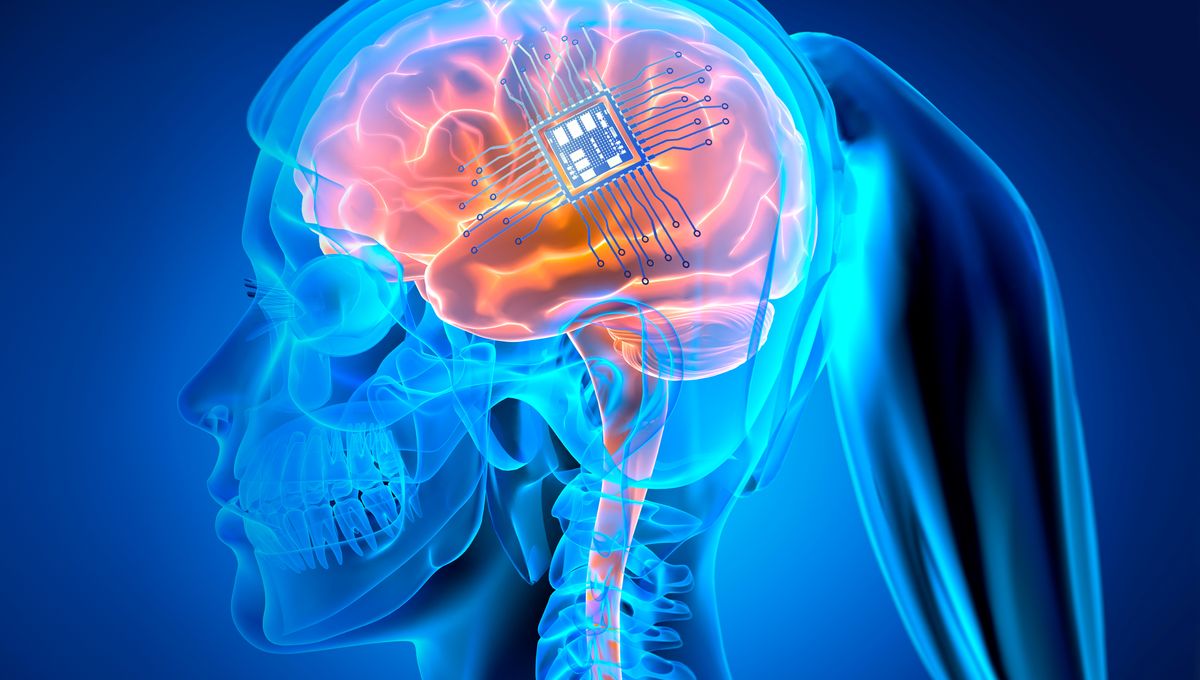
The world record for the largest number of electrodes placed onto a human brain was just broken by brain-computer interface developers Precision Neuroscience. They successfully placed four arrays, each containing 1,024 tiny electrodes, onto the surface of a living patient’s brain, doubling the previous total record of 2,048.
Brain-computer interfaces (BCIs) combine implanted electrodes that record brain activity in specific regions with a computerized device that can generate some kind of output, with the aim of replacing or enhancing particular functions. There are BCIs that help people communicate, operate robotic limbs, and – perhaps made most famous recently by Elon Musk’s Neuralink – control a computer with their mind.
Co-founded in 2021 by Ben Rapoport, who also co-founded Neuralink but departed the following year, Precision has been developing its investigational system, the Layer 7 Cortical Interface, as a way to maximize electrode density. The aim is for more electrodes – generating more precise data – to be added to the brain’s surface without damaging it.
“It is easy to see the impact that high resolution cortical mapping could have in the operating room,” explained Dr Joshua Bederson, who led the record-breaking surgery, in a statement. “It could be used to guide more precise and efficient procedures, which could potentially lead to better outcomes for patients.”
Bederson’s team carried out the procedure at the Mount Sinai Health System in New York in April 2024, as part of a larger clinical study of the Layer 7 Cortical Interface. Each electrode array measures only 1.6 square centimeters (0.2 square inches), meaning that once all four were in place, the surgeons had managed to pack a whopping 4,096 electrodes into an area of just over 8 square centimeters (1.2 square inches), as first reported by CNBC.
The procedure was a planned operation to remove a benign tumor that also happened to provide a great opportunity to test the device for the 14th time in a living person. Bederson described to CNBC, who attended the surgery, that placing four electrode arrays was “a little bit awkward”, but the efforts paid off when they began successfully collecting data.
Key to Precision’s ethos is the minimally invasive nature of their device. The Layer 7 Cortical Interface is designed to reversibly attach to any part of the brain’s surface during a simple and speedy surgical procedure. If the arrays need to be removed at a later date, it should not cause any tissue damage.
Neuralink’s N1 device, which was recently implanted into its first human recipient, takes a slightly different approach by relying on 64 super-fine wires containing a total of 1,024 electrodes that are threaded a few millimeters deep into the brain tissue. This process caused some issues shortly afterward when a number of the threads retracted, putting many of the electrodes out of action.
This is not a two-horse race between Precision and Neuralink, however. There are a number of other private companies, academic researchers, and government bodies working in this area. At the same time, politicians and lawmakers are beginning to grapple with the legal and ethical implications of BCIs becoming more commonplace.
For now, though, this kind of technology is still considered experimental. Tests of the Layer 7 Cortical Interface are continuing, and Precision hopes to bring a commercial product to market sometime in 2025.
Commenting on the record-breaking achievement, Rapoport said, “This record is a significant step towards a new era. The ability to capture cortical information of this magnitude and scale could allow us to understand the brain in a much deeper way.”
Source Link: Neuralink’s Got Competition! World Record Smashed For Electrodes Placed On A Human Brain